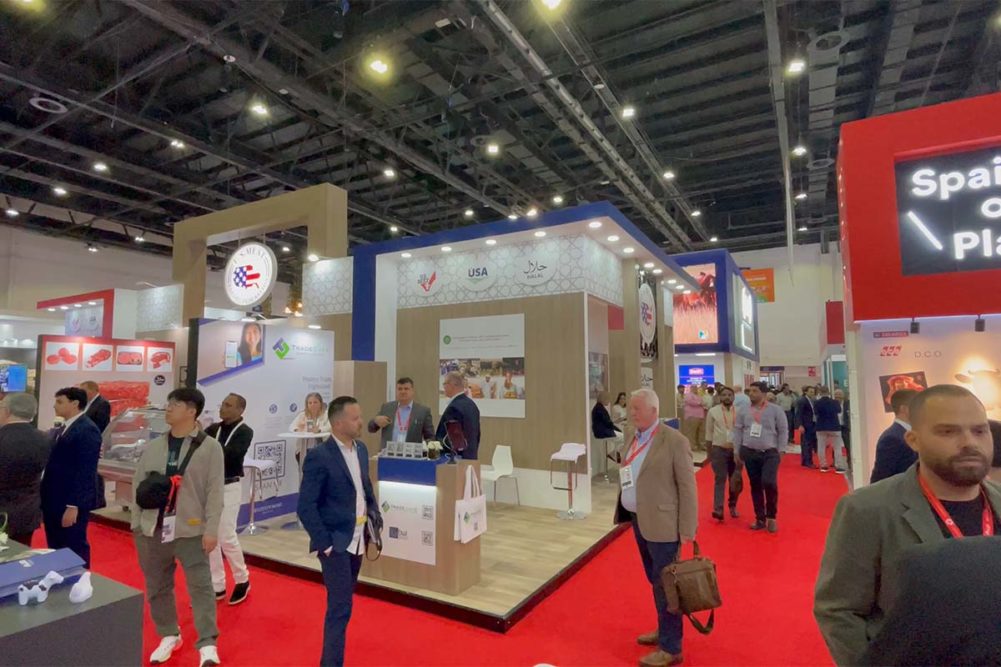DENVER — One of the world’s largest annual food and beverage trade shows, Gulfood 2024, commenced last week in Dubai, United Arab Emirates (UAE), from Feb. 19 to 23. The convention beckoned more than 150,000 attendees from 190 countries.
Dan Halstrom, president and chief executive officer of the US Meat Export Federation (USMEF), described the event as the busiest Gulfood show he has ever attended, with exceptionally large contingents from Africa, the Middle East, China and North Asia.
“Gulfood 2024 in Dubai was yet again another, I think, record-breaking attendance,” he said. “At least for the first three days, it looked like a much bigger attendance than any of the previous years I’ve been to. People think of it as kind of a Middle Eastern, African show — and it is — but it’s really a global food show.”
Among the topics of discussion, Gulfood 2024 touched on persistent supply issues and the downturn in the availability of production due to drought. Halstrom added that the convention provided an opportunity to look at different cuts of meat.
“If they’re used to middle meats, for example, maybe we could look more at the end cuts,” Halstrom said. “If they’re used to end cuts and can’t get as many as they would like, why don’t we look at beef variety meats? I think this sort of discussion was a theme and a real positive because, for the most part, the people in the trade understand what’s going on with factors out of our control, and they’re willing to work with us.”
Commenting on the economic outlook for the region, Halstrom said it’s divided depending where in the Middle East the market is. He noted a promising outlook for Saudi Arabia and UAE despite headwinds in the region. However, areas like Jordan, Lebanon and Egypt appear to be under more strain due to activity around the Suez Canal and the Gaza situation.
Regarding the shipping constraints across the Red Sea, Halstrom called attention to an immediate and a long-term concern:
“A lot of (vessels) have to go around the Cape of Africa, which not only adds cost but probably a bigger concern is adding time on to the route. I think the theme was anywhere from 10 to 14 days increased transit time. So you’re adding cost, and you’re adding logistical time frame into it. But that’s the immediate concern. The more long-term concern is the longer this goes on, the more that this could disrupt the overall vessel flow, which, as everyone knows, is a global flow.”



